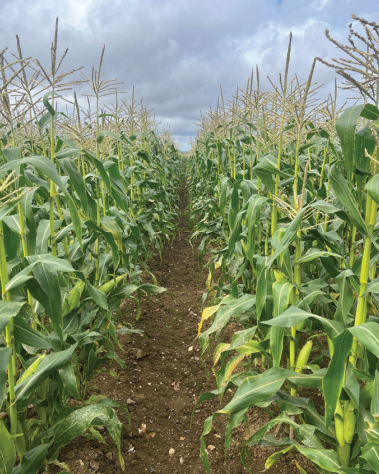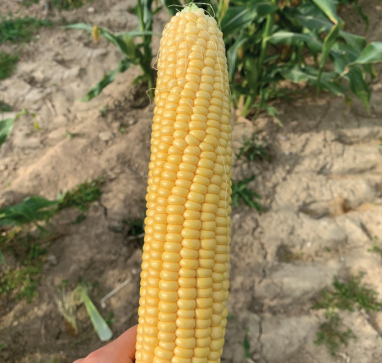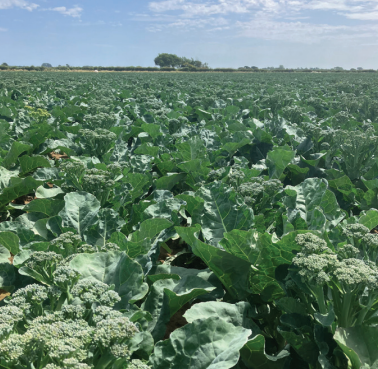From small holding to globally integrated farming and food business, award-winning vegetable producer, Barfoots, has put sustainability at the front and centre of its operation — with biostimulants an increasingly important tool in its crop management strategy.
The Barfoots business was founded in 1976 when fifth generation farmer Peter Barfoot started growing courgettes at the family farm in Botley, Hampshire. Over fifty years later and still family-owned, the company has grown exponentially to become a global supplier of semi-exotic fresh produce, covering a vast number of acres and employing thousands of people — all the while striving for advances in fresh produce excellence.
Growing, packing and processing a wide range of vegetables at its farm facilities around the world, Barfoots helps to ensure a year-round supply of high-quality produce to all the major supermarkets in the UK and Europe as well as food service customers. The company has also gone on to become the biggest European producer of sweetcorn, UK suppliers of Tenderstem broccoli and courgettes, and majors in asparagus, legumes and pumpkins. And for those who have had the pleasure of courgette spaghetti, butternut squash noodles and corn ribs from the supermarket, these all originated from the Barfoot’s Innovation Kitchen.
Managing the companies UK farm on the South coast, farms director Neil Cairns is responsible for the £24M operation having 40 years of agronomy experience under his belt, supported by agronomy and farm technical manager Emma Lilley. “In the UK we’re farming 9,500ac between Southampton, Pulborough and the Isle of Wight, with 50% down to sweetcorn, 550- 600ac of Tenderstem, 400ac courgettes, 750ac asparagus, and we grow a lot of green beans and pumpkins,” explains Neil.
“We try to keep to a one-in-five rotation for the courgettes, Tenderstem and beans, with the sweetcorm grown in with a cereal rotation of one in two or one in three years, depending on land availability. Of the 9,500ac we farm, we own a quarter of it and rent the rest through either long-term farm business tenancies or a short-term cropping license.”

Disease challenges
The rotation is key for disease control in the beans and Tenderstem and keeping clubroot and sclerotinia out, continues Emma, who is also responsible for the companies’ UK trials and research programmes. “In fact, pest, disease and weed control has become an increasing challenge over the past five to six years with the loss of approved chemistry for use in veg.
For example, we lost Dursban (chlorpyrifos) four years ago, which was key for the control of bean seed fly, and there has been no alternative options to replace it. “Aphids can also be problematic for crop quality as they bring in viruses, while mildew needs to be treated for routinely and cercospora in some years.”
Biostimulant solutions
It’s for these reasons that the business started looking at biostimulants, says Neil. “Biostimulants have been on my radar for 20 years, but I’d always been very sceptical until about five years ago when we started looking at them seriously in our trials programmes. “With the loss of chemistry and few solutions on the horizon, we’ve had to find alternative ways of protecting our crops.”
Going down the biostimulant route has been based on the theory that if crops can establish and get away faster, pests like the bean seed fly become less of a problem, he explains. “Through researching different biostimulant options and applying them in our trials programme on the farm, we’ve found Interagro’s Bridgeway to be key.
In our first year of trials, we recorded a 25% yield improvement in our Tenderstem broccoli where it had been treated with Bridgeway – a substantial increase.” Over the past few years, the farm has been applying several applications of Bridgeway early on — to seedlings, at transplanting and also post-planting — with good success.

“With the Tenderstem, for example, we establish seedlings in trays under glass and these all receive a dose of Bridgeway before they’re moved out to the field. We use automatic planters to transplant them and apply a second and third dose of Bridgeway one to two weeks later.” On the organic crops – courgettes, Tenderstem and sweetcorn — where there are fewer crop protection alternatives, the team are applying weekly, adds Emma.
“All our crops are massively impacted by heat stress, and we find early applications not only improve crop resilience, but the Bridgeway is also crucial to help crops put their roots down. They’re the lifeline to the plant and a more extensive root system helps increase water retention so we don’t have to rely so much on irrigation.”
Emma adds that broccoli in particular is very sensitive to heat stress and requires a lot of nutrition, so manipulating the crop with biostimulants to improve nutrient use efficiency and maintain transpiration is key. “If extreme heat is forecast, we will apply another dose of biostimulant ahead of time, as we’ve found it helps the crop cope better and take in the required water. Stressful field conditions cause broccoli to flower and therefore it becomes out of spec.”

Healthy soils
Biostimulants are just one piece of the puzzle, however, feeding into the bigger picture of prioritising plant health. And productive crops start with healthy soils, explains Neil. “Soil health is a huge focus. We rent and lease a lot of land and our ethos is that we should look after it as if we will farm it forever.
“We min-till or strip-till to minimise soil disturbance as much as we can, and we’re using cover crops across 2,500ac to help with soil structure and improve organic matter levels. Their strong root growth gives a subsoiling effect and also helps with moisture retention and reducing run-off. “We typically use a three-way mix of phacelia, burseem clover, rye or black oats after early harvested crops such as the sweetcorn.



With beans and broccoli in the rotation we have to be careful to avoid clubroot, so we avoid brassicas and legumes for example.”
Sustainability strategies
Alongside sustaining plant health, another key strand of the business is environmental sustainability — reducing, re-using and recycling so “waste” doesn’t go to waste. In 2010 Barfoots built its first AD plant producing enough green energy from waste generated at Sefter Farm to power the entire site. As well as this, it also creates organic fertiliser in the form of digestate for Barfoots Farms, enabling huge savings on synthetic fertiliser inputs.
Fed by the rye, maize and waste from the sweetcorn husks, the digestate is rich in nitrogen, phosphorus, potassium and micronutrients, leading to a 50% reduction in synthetic fertiliser use and increased organic matter in the soil, says Neil. “Carbon emissions are a huge focus for our customers and the Barfoots family, so we continue to explore ways to reduce it further.” Water management and conservation is also a priority, and in 2022 a water treatment facility was built at Sefter Farm to convert all factory wastewater into irrigation water for crops. Re-using 280,000 litres of water daily, the irrigation water can cover 300m3 per day.
Future plans
This quest for sustainability is very much part of the long-term strategy, concludes Neil. “We’re trying to apply chemistry prescriptively, rather than routinely, by optimising plant health and trapping pests for thresholds. The weather and climate change influences that, so we’re trying to be more proactive in how we prepare our crops. “Product efficacy is waining, and while there maybe new crop protection inputs coming to the market in the near future, I see us using more biostimulants. Products like Bridgeway help us keep the crop greener for longer and allows us to make maximum use of the crop nutrition available – especially micronutrients — which is vital, particularly for our organic crops.”
